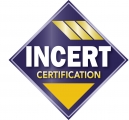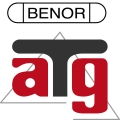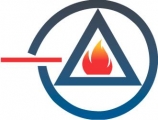
Intentional fires, also known as arson, represent an often underestimated threat with potentially dramatic consequences. In Belgium, 18 fires break out every day, and more than half of these are of intentional origin. Businesses are not spared: malicious or criminal acts, revenge from former employees, insurance fraud – the causes are multiple, but the danger is the same.
Why do these events occur? How can we better prevent them and react effectively?
On March 20, 2025, ANPI organized an exclusive webinar to provide concrete answers to these questions. Fire prevention experts, firefighters, insurers, and loss investigation specialists shared their knowledge on regulations, protection systems, cause identification, and best practices to limit the risks of intentional fires and malicious intrusions.
Discover the highlights of this event now and access the full replay to deepen your knowledge!
➡️ Watch the webinar in replay
A global strategy for effective prevention
Preventing intentional fires requires an approach combining several essential components:
Active prevention: Implementation of INCERT-certified surveillance and control devices.
Reliability of fire protection systems:
Use of BOSEC/INCERT certified products and services.
Compliance with NBN S 21-100-1 & NBN S 21-100-2 standards.
Initial acceptance of installations by an accredited inspection body such as ANPI.
Maintenance and servicing ensured by BOSEC/INCERT certified installers.

Regular checks and inspections by an accredited inspection body such as ANPI to guarantee system performance.
- Professional training: Raising awareness of risk identification and acquiring the reflexes to react effectively to a disaster.

- Collaboration between different stakeholders: Involvement of RCCI (Research into the Causes and Circumstances of Fire) experts, fire services, law enforcement, and insurers.
Understanding ARSON: A crucial issue
The term "ARSON" refers to intentional fires. In 2023, nearly 3,500 criminal fires were recorded in Belgium, highlighting the importance of anticipating and controlling this omnipresent risk. However, not all these incidents are necessarily criminal; some result from negligence, accidents, or complex motivations such as insurance fraud, vandalism, or psychological disorders. Identifying the causes and implementing appropriate measures is essential to limit their impact.
An overview of interventions
The invited specialists shared their expertise from different angles:
- Michel Delruelle (ANPI)
Regulatory aspects – Context: Presentation of fire safety standards and their application to intentional fires.
Prevention methods – How to prevent/avoid damage: Highlighting concrete solutions to limit risks.
- Jean-Marie Pierre (ARSON Prevention Club)
ARSON training: Presentation of the subjects taught, case studies, and tools for a better understanding of intentional fires and intrusions.
Investigations – Fire cause investigation: Methodologies and techniques used to determine the origin of incidents.

- Jack Daie (RPA Hainaut Sécurité)
Added value of RCCI for different stakeholders: Importance of in-depth analysis of incidents.
Preservation of traces and clues: Best practices to ensure an effective investigation.

- Maxime Soldati (Allia)
- Insurer's perspective: Impact of intentional fires on compensation and essential prevention measures to ensure better coverage.
Essential collective mobilization
The discussions highlighted the need for a concerted strategy to reduce the risks of intentional fires. Securing sites, using certified systems, and training key stakeholders are essential levers for preserving property and human lives.
This webinar is intended for insurance brokers, prevention advisors, contractors, and building and community managers concerned with understanding how to prevent these incidents, limit their consequences, and analyze their causes.
Don't let fire decide the future of your business! Discover the best practices to limit these risks now.






